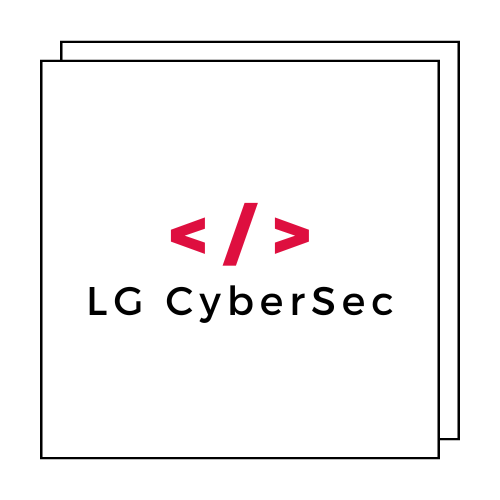In the ever-evolving landscape of cybersecurity threats, a sophisticated new malware variant has emerged that’s causing significant concern among security experts. ClickFix malware represents a particularly insidious form of browser hijacker that exploits social engineering tactics to infiltrate systems and compromise user data. This deceptive threat has been making headlines throughout 2024, targeting unsuspecting users through cleverly disguised legitimate-looking interfaces.
Unlike traditional malware that relies on obvious vulnerabilities, ClickFix malware operates through psychological manipulation, convincing users to willingly download and execute malicious code. Understanding this threat is crucial for maintaining robust cybersecurity defenses in today’s digital environment.
What is ClickFix Malware? Understanding the Threat Landscape
ClickFix malware is a sophisticated browser hijacker that masquerades as legitimate software or browser updates. This malicious program specifically targets Windows systems and popular web browsers including Chrome, Firefox, and Edge. What makes ClickFix particularly dangerous is its ability to blend seamlessly with authentic user interfaces, making detection extremely challenging for average users.
The malware operates through a multi-stage infection process that begins with social engineering attacks. Cybercriminals behind ClickFix have developed an intricate system that presents users with fake error messages, security warnings, or update notifications that appear to originate from trusted sources like Microsoft, Google, or major antivirus companies.
Technical Characteristics of ClickFix Malware
From a technical perspective, ClickFix malware exhibits several distinctive characteristics that set it apart from conventional browser hijackers:
- Persistence mechanisms: The malware establishes multiple registry entries and scheduled tasks to ensure survival across system reboots
- Process hollowing: ClickFix can inject malicious code into legitimate system processes to avoid detection
- Network communication: Establishes encrypted connections to command and control servers for receiving instructions
- Browser modification: Alters browser configurations, homepage settings, and search engine defaults
- Data exfiltration capabilities: Harvests sensitive information including login credentials, browsing history, and personal data
How ClickFix Malware Spreads: Infection Vectors and Distribution Methods
Understanding the spread mechanisms of ClickFix malware is essential for implementing effective prevention strategies. This sophisticated threat employs multiple distribution vectors to maximize its reach and infection success rate.
Primary Distribution Channels
Malicious websites serve as the primary distribution channel for ClickFix malware. Cybercriminals create convincing replica sites that mimic legitimate software vendors, tech support pages, or security companies. These websites often rank highly in search results through black-hat SEO techniques, increasing the likelihood of user interaction.
Email campaigns represent another significant distribution vector. Attackers craft professional-looking emails that appear to originate from trusted organizations, containing links that redirect users to ClickFix-infected landing pages. These emails often create urgency by claiming security breaches or system vulnerabilities require immediate attention.
Social media platforms have become increasingly important distribution channels. Malicious actors create fake profiles and share links to ClickFix-infected content, leveraging social trust and viral sharing mechanisms to reach broader audiences.
Advanced Social Engineering Tactics
ClickFix malware operators have perfected several psychological manipulation techniques that significantly increase infection success rates. These include creating false sense of urgency through security warnings, leveraging authority figures by impersonating trusted companies, and exploiting helpful intentions by presenting the malware as beneficial system optimization tools.
Identifying ClickFix Malware: Warning Signs and Symptoms
Recognizing ClickFix malware infections requires understanding both obvious symptoms and subtle behavioral changes that indicate system compromise. Early detection is crucial for minimizing damage and preventing data theft.
Browser-Related Symptoms
The most immediate indicators of ClickFix infection manifest within web browsers. Users typically notice unauthorized changes to homepage settings, default search engines replacement with suspicious alternatives, and frequent redirects to unknown websites. Additionally, the malware often injects unwanted advertisements, pop-ups, and sponsored content into legitimate web pages.
Browser performance degradation is another common symptom, with pages loading slowly, frequent crashes, and unresponsive tabs becoming regular occurrences. New toolbars or browser extensions may appear without user authorization, while attempts to modify browser settings may be blocked or automatically reverted.
System-Level Indicators
Beyond browser symptoms, ClickFix malware can cause system-wide performance issues. Users may experience slower boot times, increased memory usage, and unexpected network activity even when browsers are closed. The malware may also disable certain security features, prevent access to antivirus software, or block visits to security-related websites.
Technical Analysis: How ClickFix Malware Operates
The technical sophistication of ClickFix malware becomes apparent through detailed analysis of its operational mechanisms. Understanding these technical aspects helps security professionals develop more effective detection and removal strategies.
Injection and Persistence Techniques
ClickFix employs advanced code injection techniques to embed itself within legitimate system processes. The malware utilizes process hollowing to replace legitimate process memory with malicious code, making detection through traditional process monitoring extremely difficult. This technique allows ClickFix to operate with the same privileges as legitimate system processes.
For persistence, the malware creates multiple registry entries across different hives, establishes scheduled tasks that execute at system startup, and may install itself as a system service. These redundant persistence mechanisms ensure that removing one component doesn’t eliminate the entire infection.
Communication Protocols and Data Exfiltration
ClickFix malware maintains communication with command and control servers through encrypted channels, often using legitimate protocols like HTTPS to avoid detection by network monitoring tools. The malware can receive updated configurations, additional payload modules, and instructions for specific actions.
Data exfiltration occurs through multiple channels, with the malware capable of harvesting browser cookies, stored passwords, browsing history, and personal information entered into web forms. This stolen data is often packaged and transmitted during periods of high network activity to avoid raising suspicions.
Prevention Strategies: Protecting Against ClickFix Malware
Implementing comprehensive protection against ClickFix malware requires a multi-layered security approach that addresses both technical vulnerabilities and human factors that contribute to infection success.
Technical Security Measures
Organizations and individual users should maintain updated antivirus software with real-time protection capabilities specifically designed to detect browser hijackers and social engineering attacks. Regular operating system updates are crucial, as they patch security vulnerabilities that malware could exploit for initial system access.
Browser security configuration plays a vital role in prevention. Users should enable automatic updates, configure strict security settings, and regularly review installed extensions and add-ons. Implementing ad blockers and script blockers can significantly reduce exposure to malicious websites and drive-by downloads.
User Education and Awareness
Since ClickFix relies heavily on social engineering, user education represents a critical defense component. Training programs should emphasize skepticism toward unsolicited security warnings, the importance of verifying software updates through official channels, and recognition of common social engineering tactics.
Removal and Recovery: Eliminating ClickFix Malware
Successfully removing ClickFix malware often requires specialized tools and techniques due to the malware’s sophisticated persistence mechanisms and system integration.

